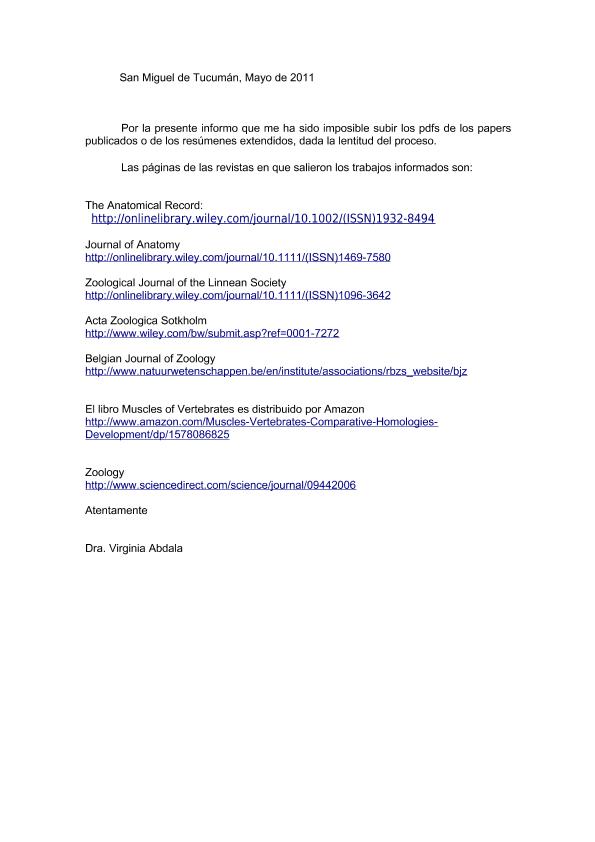Artículo
The Tendinous Patterns in the Palmar Surface of the Lizard Manus: Functional Consequences for Grasping Ability
Fecha de publicación:
05/2009
Editorial:
Wiley Interscience
Revista:
The Anatomical record Part A
ISSN:
1552-4892
Idioma:
Inglés
Tipo de recurso:
Artículo publicado
Clasificación temática:
Resumen
In lizards, distinct patterns of the tendinous structures associated with the forearm flexors have been described. In most lizards, the m. flexor digitorum longus ends in a tendinous plate with an embedded sesamoid, from which tendons run to the terminal phalanx of each digit. This structure is known as the flexor plate. In many polychrotid lizards, however, the flexor digitorum longus muscle is continuous with individual tendons running to each digit, and no complete flexor plate is present. In most geckos, the flexor plate is reduced to a tendinous plate without sesamoid. To evaluate the consequences of these differences in morphology on locomotion and grasping, we compared the use of the fore‐arm and hand in lizards exhibiting three different tendon patterns (Pogona vitticeps, an agamid with a well‐developed flexor plate; Gekko gecko, a gekkonid with a flexor plate, but without an embedded sesamoid; Anolis equestris, a polychrotid without flexor plate, but showing independent tendons running to each digit) while moving on different substrates. We found that the presence of a flexor plate with sesamoid bone prevents digital flexion and creates a rather stiff palmar surface in P. vitticeps. This configuration makes it impossible for P. vitticeps to grasp narrow branches and results in a strongly impaired locomotor performance on narrow substrates. Both G. gecko and A. equestris can flex the palms of their hands and their fingers more extensively, and do so when moving on narrow substrates. We suggest that the reduction of the flexor plate in both G. gecko and A. equestris allows these animals to move effectively on narrow substrates.
Palabras clave:
Flexor Plate
,
Forearm Muscles
,
Grasping Hand
,
Lizards
,
Palmar Sesamoid
,
Tendons
Archivos asociados
Licencia
Identificadores
Colecciones
Articulos(CCT - NOA SUR)
Articulos de CTRO.CIENTIFICO TECNOL.CONICET - NOA SUR
Articulos de CTRO.CIENTIFICO TECNOL.CONICET - NOA SUR
Articulos(CICYTTP)
Articulos de CENTRO DE INV.CIENT.Y TRANSFERENCIA TEC A LA PROD
Articulos de CENTRO DE INV.CIENT.Y TRANSFERENCIA TEC A LA PROD
Citación
Abdala, Virginia Sara Luz; Manzano, Adriana Silvina; Tulli, María José; Herrel, Anthony; The Tendinous Patterns in the Palmar Surface of the Lizard Manus: Functional Consequences for Grasping Ability; Wiley Interscience; The Anatomical record Part A; 292; 5-2009; 842-853
Compartir
Altmétricas




